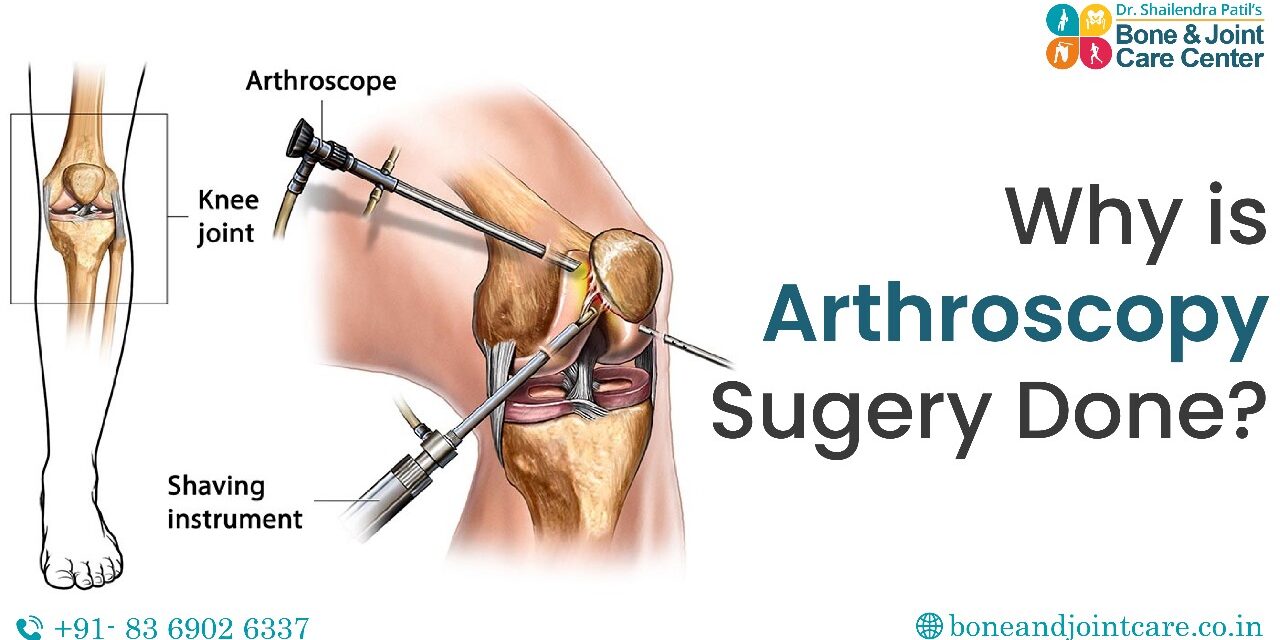Arthroscopy surgery has emerged as a groundbreaking medical procedure for diagnosing and treating various joint-related issues. This minimally invasive technique offers numerous advantages, including reduced pain, quicker recovery times, and improved patient outcomes. In this guide, you can learn why arthroscopy surgery is performed. You can also learn about specific conditions that may necessitate this cutting-edge procedure.
Reasons for Arthroscopy Surgery
Let’s explore some of the primary reasons why Knee ARTHROSCOPY SURGERY In Mumbai is performed:
Difficulty in fully straightening or bending the knee can stem from various factors, such as a meniscus tear or loose bodies within the joint. Arthroscopy enables the surgeon to precisely identify the underlying cause of these problems, which can then be effectively addressed. This results in improved joint mobility and a reduction in discomfort.
- Ligament Injury
Ligaments are resilient, flexible tissue bands connecting bones to other bones within a joint. When a ligament becomes damaged due to a sports-related injury or a fall, it can lead to significant pain and instability within the affected joint. Orthopedic Doctors frequently use this surgery to evaluate the extent of ligament damage and to repair or reconstruct the damaged ligament, ultimately restoring stability and function to the joint.
Also Check: “How to Avoid Muscle Strain and What Triggers It?”
- Frozen Shoulder
Frozen shoulder, medically known as adhesive capsulitis, is characterized by stiffness and pain in the shoulder joint, leading to a restricted range of motion. Arthroscopy is employed to visualize and treat the inflamed and thickened joint capsule, allowing the surgeon to release the tight tissues, alleviate symptoms, and restore shoulder mobility.
- Cartilage Injury
Injuries to cartilage, such as those affecting the articular cartilage in the knee, can result from trauma or degenerative conditions. Damaged cartilage does not heal well naturally. Arthroscopy offers the opportunity to assess cartilage health and conduct procedures like microfracture or cartilage transplantation to stimulate healing and restore joint function.
- Recurrent Shoulder Instability
Shoulder instability can result in frequent dislocations or subluxations of the joint, causing pain and functional limitations. Arthroscopy is utilized to evaluate the structures within the shoulder joint, pinpoint the source of instability, and perform stabilization procedures depending on the severity to prevent recurring dislocations.
- Meniscus Injury
The meniscus is a C-shaped piece of cartilage found in the knee joint that acts as a shock absorber. When the meniscus becomes torn, it can lead to pain, swelling, and walking difficulties. Arthroscopy is employed to visualize the meniscus and either repair or trim the torn portions, aiming to alleviate symptoms and prevent further damage to the knee joint.
Conclusion
Arthroscopy surgery has revolutionized the field of orthopedics, offering a less invasive and more precise approach to diagnosing and treating various joint issues. Whether you are dealing with ligament injuries, cartilage problems, or shoulder instability, arthroscopy can be an effective solution. To determine if arthroscopy surgery suits your condition, consult an orthopedic specialist. Dr. Shailendra Patil, a renowned Knee Replacement Surgeon In Mumbai at the Bone & Joint Care Center, is a trusted expert in the field, known for his experience and expertise in arthroscopic procedures. Make an informed choice for your joint health and explore the benefits of arthroscopy surgery today.







